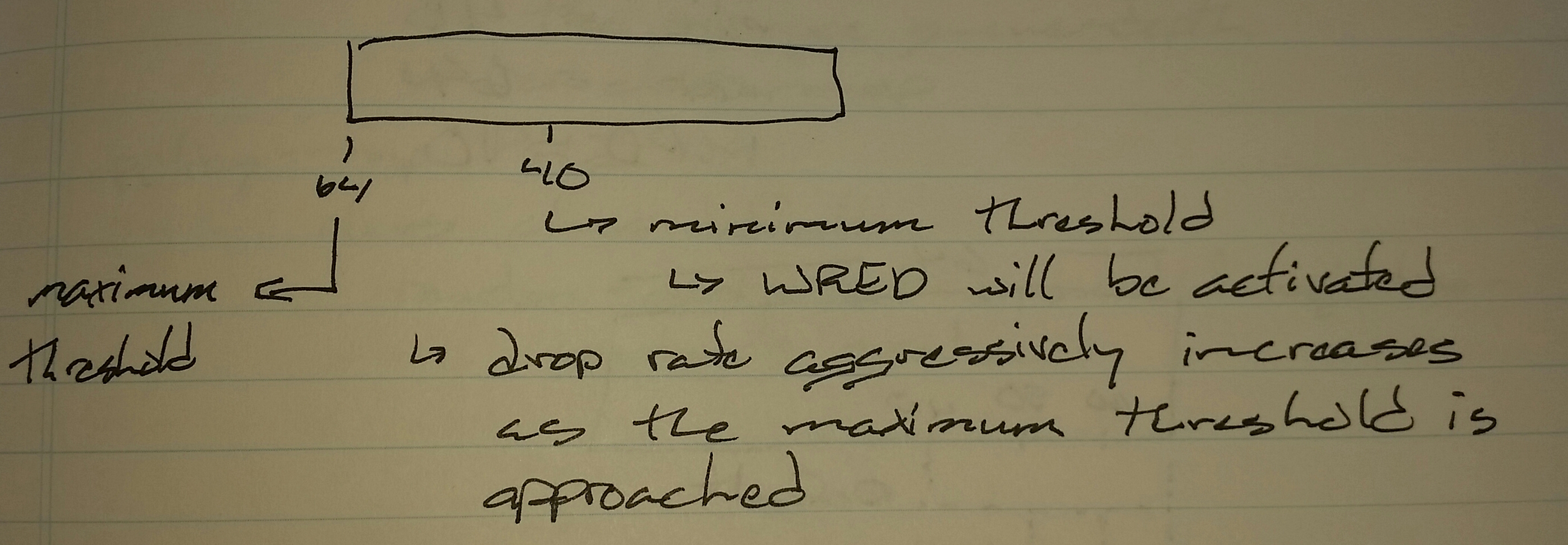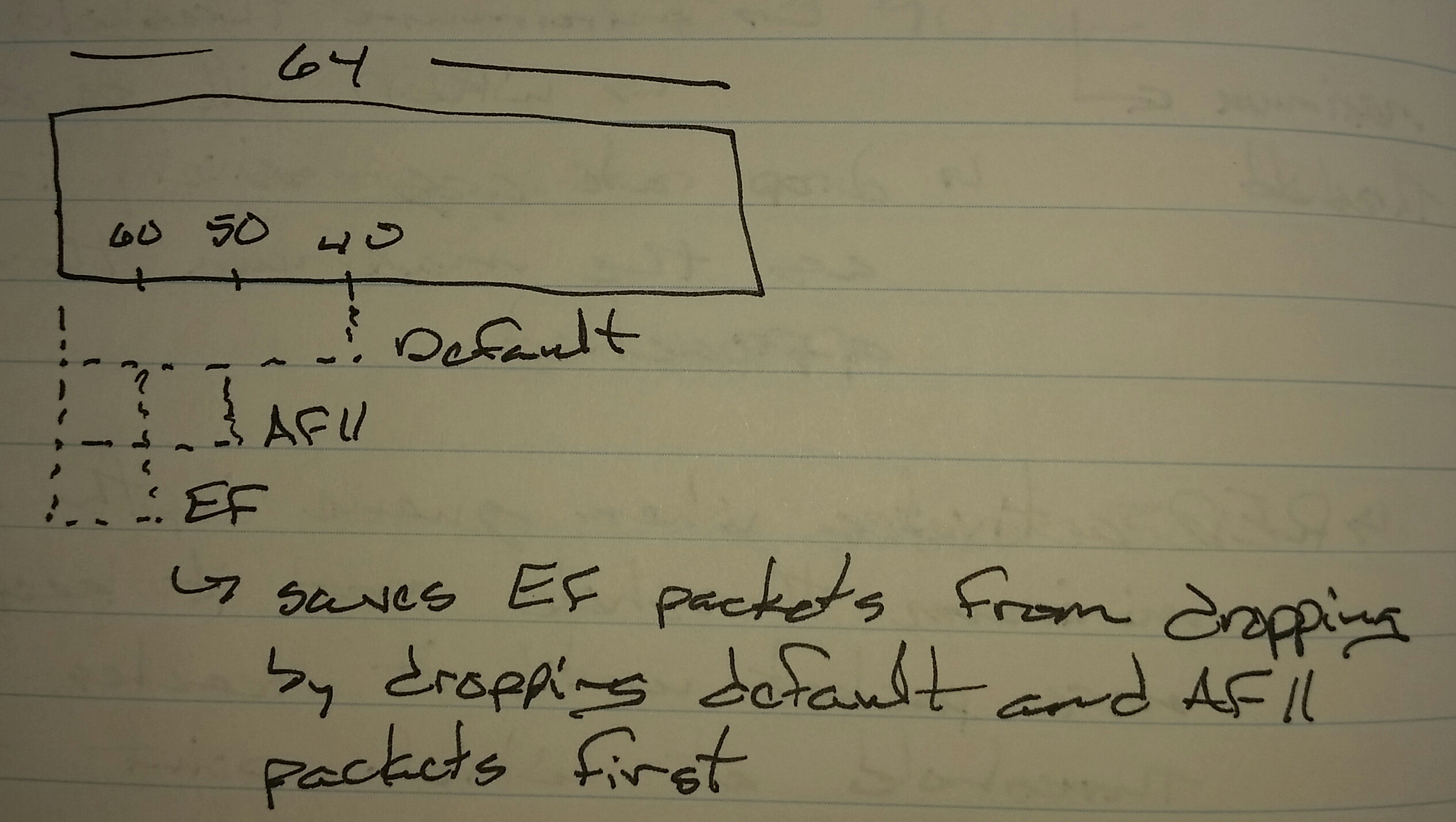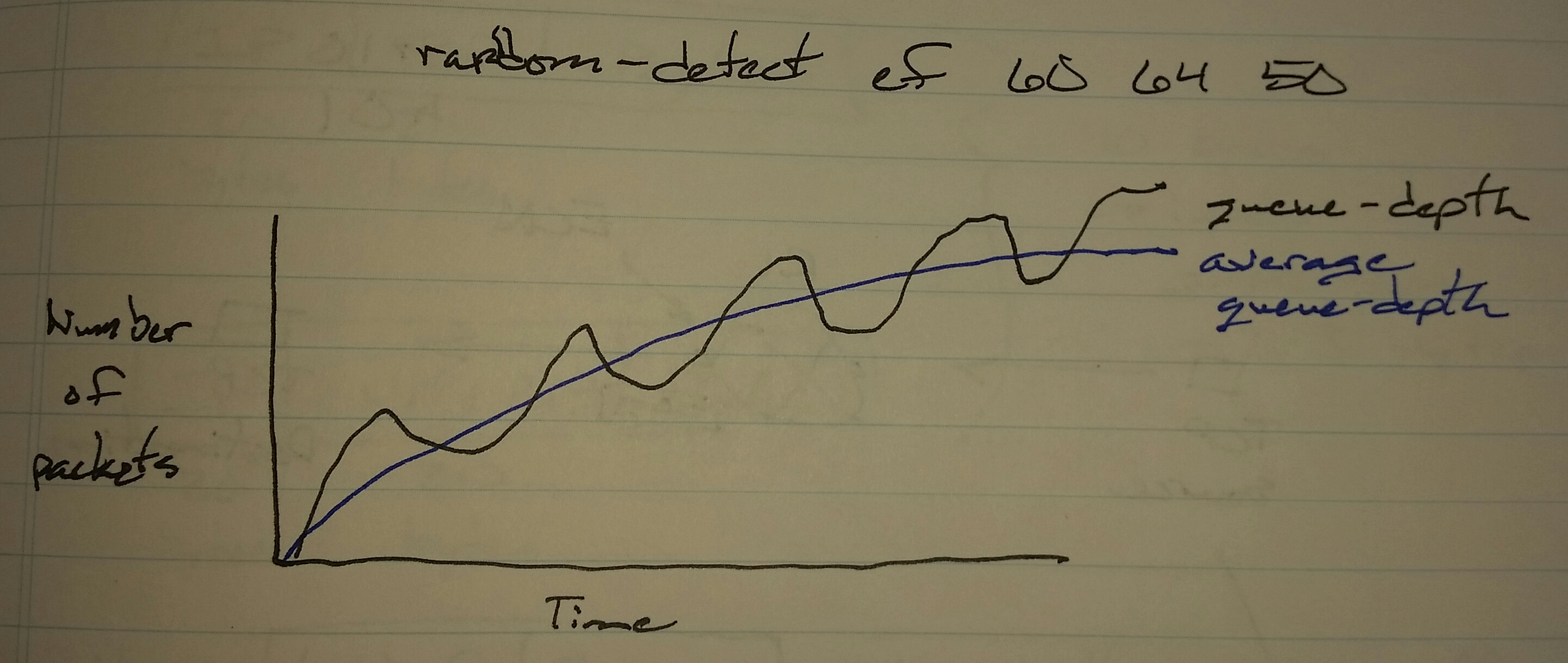QoS Weighted Random Early Detection (WRED) Notes
QoS Weighted Random Early Detection (WRED)
Congestion Avoidance
– Avoiding tail drop
– WRED
– Explicit Congestion Notification (ECN)

To avoid tail drop, the incoming packet rate of the packets needs to be lowered
– Pick random TCP packets to drop
-> TCP window of the sending and receiving endpoints will be reduced
-> Lowers the sending rate
-> Congestion Window Size (CWND)
-> Packets within the queue are dropped when the queue is almost full

RED Activates when queue-depth reaches minimum threshold and it keeps dropping more packets until it reaches maximum threshold, at which point tail drops start
The maximum percentage of packets dropped just maximum queue threshold is reached is called the Mark Probability Dnominator
max percent = 1 / MPD
WRED
– Per marking
-> Minimum threshold
-> Maximum threshold
-> MPD
Scenario
– Drop DSCP EF packets only when
-> min threshold = 60
-> max threshold = 64
-> MPD = 50
– Drop AF11 packets only when
-> min threshold = 50
-> max threshold = 64
-> MPD = 20
– Drop everything else when
-> min threshold = 40
-> max threshold = 64
-> MPD = 10

policy-map POLICY1
class class-default
random-detect
random-detect { dscp-based | precedence-based }
random-detect { dscp | precednce } <min> <max> <mpd>
policy-map POLICY1
class class-default
random-detect
random-detect dscp-based
random-detect dscp ef 60 64 40
random-detect af11 50 64 20
random-detect default 40 64 10

Exponential Weighting Constant
– The average queue-depth is calculated by using an exponential weighting constant which by default is 9
-> A higher value means slower changes to the average queue-depth
-> A lower value means faster changes to the average queue-depth
-> Per class-map
policy-map POLICY1
class class-default
random-detect exponential-weighting-constant <value>

